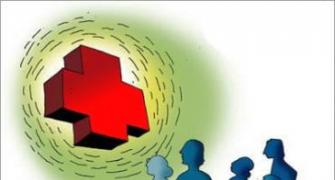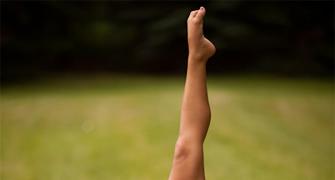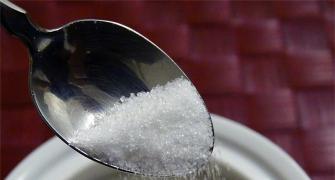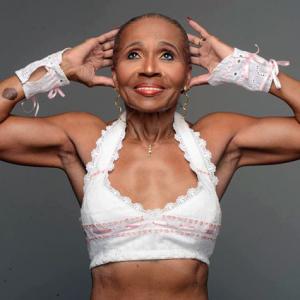2017 is about functional training and natural movements. Form is more important than numbers. Kitchens can be a great place for workouts. And going back to the Stone Age is not such a bad option.
Veenu Sandhu highlights new ways to get and stay in shape.
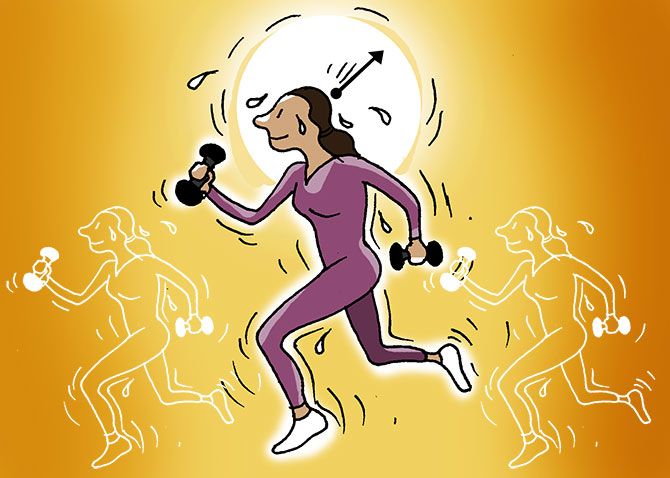
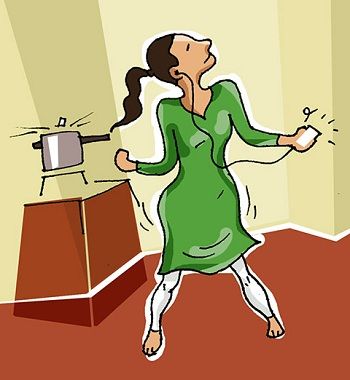
Metabolic training
Metabolic training, also called metabolic conditioning, is high intensity interval training.
"In this, the workout period is more and the rest periods are minimal," says Swapnil Hazare, senior fitness consultant, Prosport Fitness. "The training takes the heart rate very high. During the short rest period, it drops but does not come down to the normal respiratory heart rate. It is still at a point where your metabolism is high enough to burn fat."
The biggest benefit of metabolic training is that you burn calories not only during the workout, but post workout as well. This effect of burning calories post exercise is known as EPOC, or Excessive Post Exercise Oxygen Consumption. Some examples of metabolic training are tabata training, interval training (30 seconds on and 30 seconds off), circuit training as well as supersets of exercises.
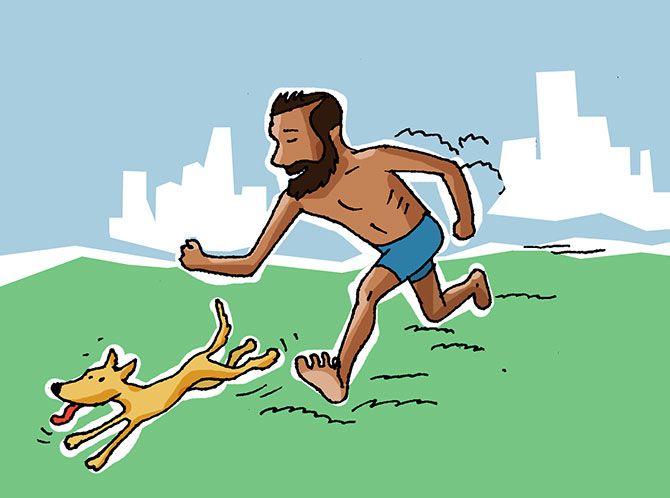
Back to the Stone Age
Fitness enthusiasts are beginning to recognise the need to draw lessons from the way humans lived thousands of years ago. The Palaeolithic Age, relating to the early phase of the Stone Age, is becoming an inspiration for an increasing number of fitness buffs who are adopting what has come to be called "palaeolithic training".
Inspired by the hunters and gatherers, Palaeolithic training is being viewed as one that can help ward off "diseases of civilisation" such as cardiovascular problems, obesity, stress, common allergies and even depression.
Unlike today, in the Palaeolithic Age, regular physical activity was not optional. Our ancestors had to labour hard to hunt for food, water and shelter and to escape predators. A research published in the Sports Medicine journal finds that we still retain those ancient genes that require us to perform high levels of physical activity to stay healthy. But, not only has our level of physical activity plunged, our eating habits too have undergone drastic changes, leading to a huge imbalance between our genetic make-up and our present-day lifestyle.
Palaeolithic training aims to correct this imbalance by encouraging people to go back to basics.
"People worldwide are increasingly choosing to liberate themselves from machines and heading out into gardens, parks, beaches, terraces, lakesides and promenades," says corporate life coach and holistic health guru Mickey Mehta.
Jumping, rolling, bouncing, crawling, cartwheeling -- anything that is natural and enhances the reflexes, balance and alertness is becoming the preferred trend, he adds. "You could say, the future is the past."
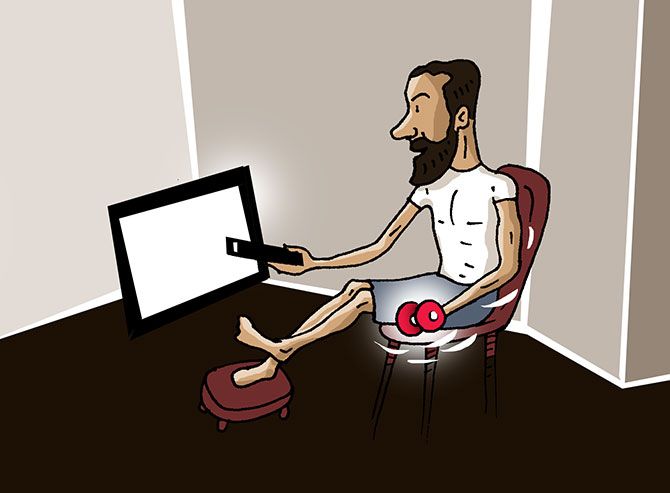
Work out through the day
Move often (frequently) instead of moving a lot at one time, says Kamal Chhikara, the instructor at the Reebok CrossFitRobust gym in Delhi. Rather than one hour of exercise at a stretch in the gym, opt for mini exercises.
This is expected to be another major shift in the way people work out. There has to be physical activity throughout the day. Four or five exercises that can be done, say, every two hours, even at the workstation or at home while watching TV are far more beneficial.
Also, when it comes to weight training, control your body before controlling external objects. And, opt for strength training over cardio. That's what keeps you in shape.

Form over numbers
Form is going to be more important than numbers, whether it is about strength training or running," says Rajat Chauhan, Adidas running expert and race director, La Ultra, India. Three proper pushups, for example, are far better than 30 imperfect ones.
The focus is also shifting from counting the number of steps you take and the distance you run -- it's now more about how you land, the kind of pressure you put when you land and so on.
A lot of technology is coming, particularly in shoes, that shows you the quality and form of your running movement. "Move well instead of moving more," adds Chhikara of Reebok CrossFitRobust.

Movement for the sake of movement
Simply move, as, when and where you please. Squat, stand on your toes, shake your body. These are all movements which, if done well, open up the body.
But begin small and then build on them. Start with a few movements separately and gradually integrate them to make a combination of the movements to work out different parts of the body.
"In the initial stages, you will need to go slow to learn and get them right," says Chhikara. "But once you've started understanding your body and how it reacts, there is no limit to these exercises."
These functional workouts can be patterned around your daily routine or lifestyle, whether a housewife or someone who sits for long hours at a desk. At the end of the day, how you feel is more important than how you look.
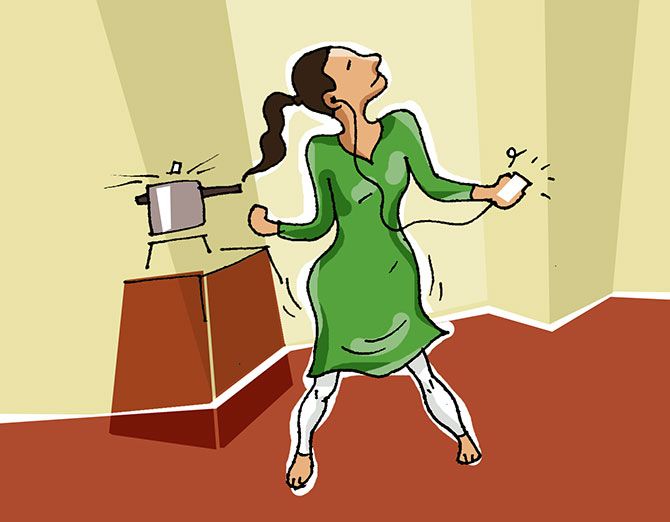
Kitchen workouts
Stove/dishwasher squats: Strengthen your legs every time you load or unload something from the dishwasher. Make sure to keep the chest lifted to keep your lower back safe, and slowly stand back up each time.
Standing calf raises: The exercise is safe and simple with low impact on the joints. Lift yourself as high as you can on your toes. Then lower your heels down as much as your ankle flexibility permits. Push equally throughout the entire width of your foot. This exercise can be done while you cook.
Kitchen dancing: Dancing is one of the easiest and most individual forms of exercises. Freestyle kitchen dancing is an excellent aerobic exercise. You can dance standing in front of your kitchen shelf. Music can be a great motivator to dance while you cook. Simply download some peppy numbers to the iPod or keep a CD player or a radio in the kitchen. Clear some space in the kitchen, turn up the music and dance. Slow ballads are a good start to a warm up.
Blender leg lift: Hold the top of the blender with one hand, then hold the counter with another and try to balance on one leg with the opposite leg lifted to a 90-degree angle. While doing this, keep your upper body close to the counter.
Stretch: Always start with basic warm-up and stretching exercises.
Sonu Singh is a physcial medicine & rehabilitation specialist at AktivOrtho.


